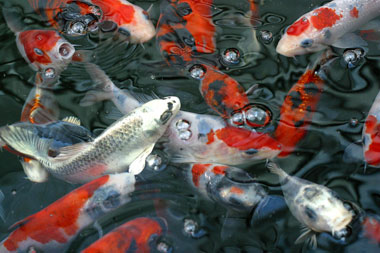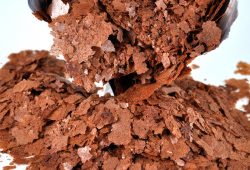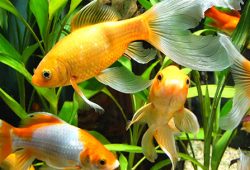Choosing pond equipment
The article gives an analysis of Choosing pond equipment. It’s true to say that the equipment for the garden pond has never been better nor more efficient than it is now. Good pumps and compact filtration systems have transformed the market, and the small pond built and running in a day is now an achievable dream.

Pond pumps
Some form of solids-passing pump now powers most filtered fishponds. These have the capability of passing solids between 4mm and, in the case of some models, as large as 12mm through to the filter.
The idea is to remove as much waste as possible from the base of the pond.
All of these pumps are caged in some fashion, and it’s possible to buy retrofit cages for some pumps that have traditionally been sponge pre-filtered.
Many of the pumps resemble the shape of landmines or hedgehogs as they’re designed to lie on the base of the pond.
The cage, however, can still get blocked in use. Blanketweed especially seems to get sucked in through the slats and into the cage, where it breaks down and acts as a superfine pre-filter to hold wastes that would otherwise reach the filter.
It also grows over the outside and inside of the pump casing to the same effect. So you still need to maintain and clean these caged pumps, though rarely as often as the old sponge pre-filter versions.
Fishkeeping pond pump owners should avoid any pump with a dual function. You want a single tight outlet to the filter that pumps all the water through one hose, not to a waterfall or fountain.
When buying: Look for simple, non-leaky hosetail fittings and use the largest diameter of hose that your system can accommodate.
Decide how easy it will be to access the pump inside its cage – do you need to undo screws, or is there a simple clip system. Will wildlife get caught in the grille (usually frogs)?
Swivel hosetail outlets on the pump make it easier to position. It can also help if it has a handle or attachment point to accommodate a rot-proof cord that can be used to lift it, keeping strain off the cable.
You may be swayed by special impeller designs, too. Perhaps most important to most of us is to remember that the pump will be on 24/7 in many cases, and that your electricity bills can rocket.
Look at the wattage of a potential pump purchase, compare it with other models, and use our Electricity Cost Calculator to see what it’s likely to cost you.
In almost every case, the pumps that are cheaper to buy for an equivalent volume will use up more electricity. Most pumps now come with a three-year guarantee, but the days when many pumps needed almost yearly replacing are long gone.
Pond filters
The advent of the solids-handling pump gave extra emphasis to the use of well-designed filters. It was now possible to gather some of the waste in the pond into the filter.
So it could make sense to use the larger of the three or more section style of box filter with a pre-filter and/or a weir to sieve out the wastes before the water passed to biological filtration in separate compartments. The wastes could then be removed periodically from a sump and/or run to waste.
However, the rise of the solids-passing pump soon coincided with a new style of filter, the pressurised canister filter, which went a long way to solving the problem of disguising a box filter.
Pressurised filters are often sold as a package with a solids-passing pump, but as suggested, there is an argument for the old box filter still.
To understand why, let’s look at both types of filter.
The box filter is a black or green plastic box of media, often with a spray bar over the top. The box is rarely less than 60cm/2′ long and a similar height, and usually much larger. As the water is pumped to the top of the filter and trickles back through the media, the box has to sit above ground and is therefore visible. Various disguised filters have been designed and are still available.
It is possible to place a box filter beside the pond below water level so the water enters by gravity and is pumped back by a pump in the filter. This means the filter is more easily hidden.
The great advantage of the box filter when coupled with a solids-passing pump is the ease of cleaning. Larger modern box filters often have two or more compartments with easily removable media – sometimes in cassette or basket form.
The water first passes through a solids-removing media such as brushes or sponges. Various weirs that slow the flow often add to the solids precipitating and removing capacity, and the wastes are collected at the base of this first compartment (and on the pre-filter media), where a variety of flushing/removal systems are employed to run them to waste (they make decent fertiliser on the garden).
A number of very good larger box filters can be bought off-the-shelf now. Modular filtration systems, skimming systems, waterfall systems and even fluidised bed filtration are already available, or will hit the market this spring.
When buying: Look for ease of maintenance (cleaning), variety of media and overall strength of build. For instance, if you can’t disguise the filter, can you sit on it or put plant pots on it?
Pressurised filters were a brand new idea when they arrived on the scene, although they stole many of the features of aquarium canister filters. Because they are locked and sealed, the water that passes through them is under constant pressure and is forced through the media – at least until it clogs.
The main benefit of this is that the units can be placed above or below pond water level (they are usually buried beside the pond), so they are easy to disguise.
The main problem, apart from the fact that the early models were perhaps a little small and maybe didn’t hold enough media, was that they could be very difficult to clean.
As a result, the last two or three years have seen a number of systems fitted to these filters to squash or scrape the sponge media inside them so that opening them and carrying out a major clean-out can be delayed as long as possible.
Imagine a bucket of media and pond mulm, filled to the brim with water and buried in the ground to that rim. Now consider the difficulty of emptying that bucket without lifting it out of its hole (which will cause the sides of the hole to collapse). You tend to end up bailing it out.
You might be excused for asking why these filters are being sold with solids-passing pumps that ensure that large amounts of waste are transferred into them.
The best answer is that they are generally more efficient, and removing waste from the pond into a filter so that it can be got rid of is far better than letting it build up on the base of the pond.
The larger pressurised filters do a very good job of filtering a fish pond, and they are all available with fitted ultra-violet units. Media is usually a combination of foam with a specialist biological filtration media. It’s the foam that needs regular cleaning.
It’s a good idea to up the required size from the manufacturer’s recommendation, if you can afford it, as few systems work at maximum capacity for long. This is because foams and pumps block gradually, and the number of fish and the overall dirtiness of the pond can have a major effect. Upping the size of the pump and filter can also extend the gaps in maintenance. The same may be true of your chosen pump.
When buying: Look for ease of maintenance and cleaning (consider factors like how easy it is to remove the lid of the canister), built-in UVs, a good variety and quantity of media, a low profile when buried, accessibility, maintained hosing and overall compatibility with your pump.
Ultra-violet clarifiers
A well-filtered pond will always have a good growth of algae in it. This is because the end-product of filtration and well-fed fish is nitrates (and some phosphates), and these feed algae.
The better your particle filtration and the clearer the water, the more likely it is that algae will thrive as the sunshine reaches into the water. Blanketweed can be a particular problem and is hard to eradicate unless you out compete it for nutrients.
Greenwater algae is the other main problem, but it’s easy to beat this using an ultra-violet clarifier (UVC) and an efficient filter.
A UVC consists of a tube surrounding another watertight tube that emits ultra-violet light. The light damages and disrupts the cells of algae, causing them to clump so the filter can remove them. Ultra-violet clarifiers (UVCs) are available as freestanding units or as part of a filter (especially pressurised filter units).
They all work well providing that the bulb is replaced at the manufacturer’s specified time and the crystal surrounding the bulb is kept clean. They must, of course, be used with the right pump and filter.
When buying: Be sure to get a unit to match your pump, filter and pond. Ask how easy it is to replace the bulb and if any awkward seals or waterproofing systems are hidden in the unit. Find out about longer-lasting bulbs and note there are both full-size and, more usually these days, compact units available.
Pond liners
Liners for fish ponds are a relatively easy purchase these days. The real choice lies between rigid pre-formed liners and flexible liners. The former are made in vacuum-moulded plastic or fibreglass; the latter come in PVC, rubber and some other modern materials.
For fishkeeping purposes, the sheer adaptability of a sheet of flexible pond-liner may well persuade you to choose this method of lining your pond.
At its simplest, you decide on a budget and find the liner to suit your pocket.
Even the cheapest liner will come with a guarantee of many years, and the more expensive liners have longer guarantees, are thicker (or if not thicker, stronger), and usually easier to work with than cheaper liners. Keep the direct sun off any liner material and it will last longer.
When buying: Ask about guarantee and flexibility – and if you’re a pessimist, about how easy it would be to repair leaks.
Size the liner up by going to our Pond Liner Calculator the calculator will also tell you how much it’s going to cost you if you enter the cost per square foot or metre.
What else might you need?
Pond owning tends to demand a high initial outlay followed (in most cases) by very little need to spend vast sums of money.
A net that will catch fish and double as a dirt skimmer will be very handy (choose one with a flat, not curved, bottom edge so that you can scrape up more easily waste from the depths).
During the hottest, calmest weather, ponds can become de-oxygenated. An air pump is a handy emergency tool, coupled to a large airstone. A simple aquarium model will do, although large pond-orientated pumps are available. They all need sheltering from the elements beside the pond.
There are various chemical items you may feel you need, ranging in importance from test kits through filter boosters to sludge destroyers. Many of these are more suited to the uncontrolled world of the water garden than the filtered fish pond.
An automatic fish feeder is handy, particularly for holidays.
If you want one luxury item that will improve your quality of life, opt for an electric pond vacuum. Used regularly to suck away mulm and waste, they take loads of pressure off the filter system and pump.
This article was first published in the 2006 issue of the Practical Fishkeeping Gear Guide.



